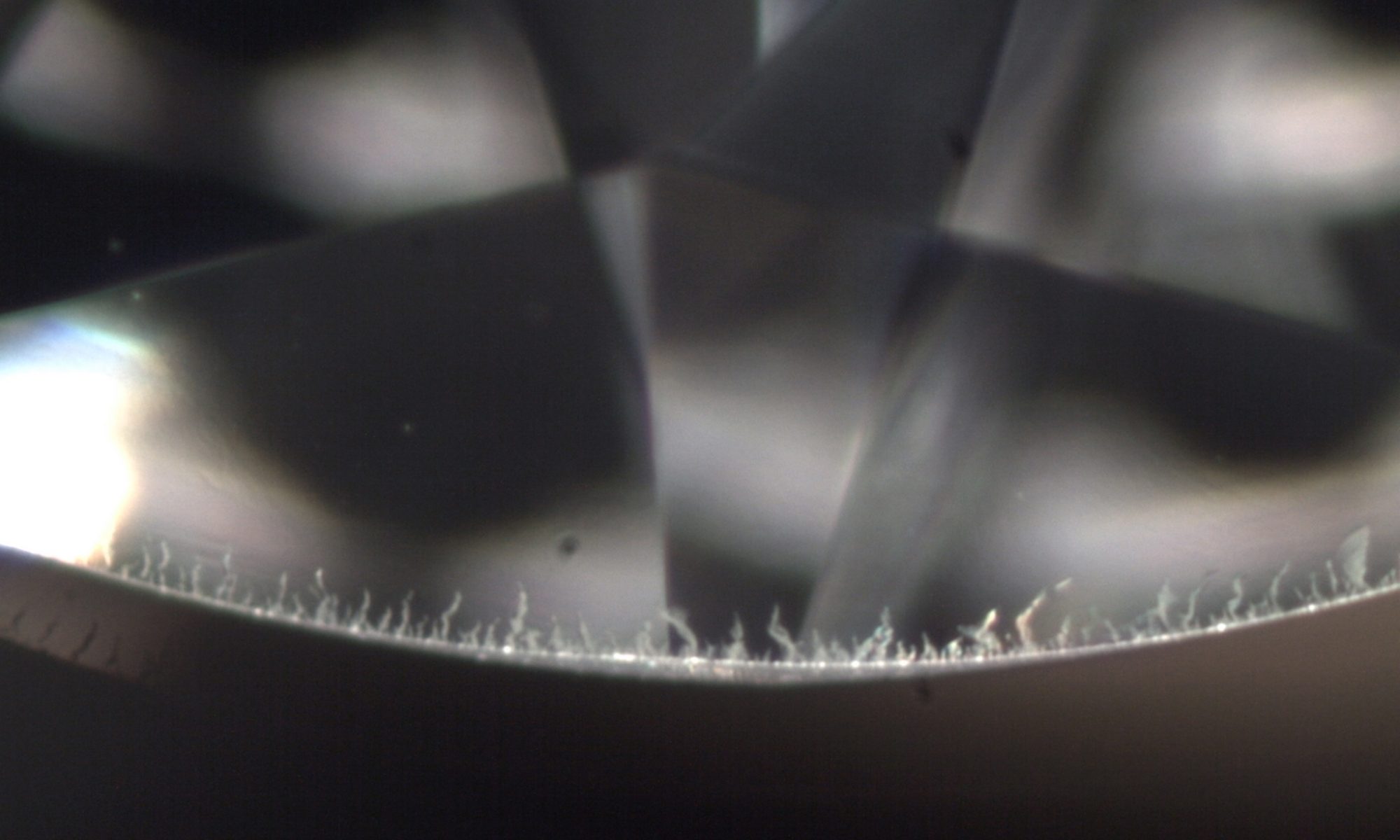Bearding in a diamond refers to the small, hairline fractures or feather-like inclusions that appear along the edges of a diamond. These fractures are typically found at the girdle or edges of the stone and are caused by external stress or impact during the cutting or handling process. Bearding is often a result of the diamond being exposed to pressure during the cutting process, which can cause the facet edges to develop tiny cracks.
Key Points About Bearding in Diamonds
Location:
Bearding usually occurs along the girdle (the widest part of the diamond) where the facets meet. It is more visible under magnification and can often be seen as feather-like fractures or small, wispy lines.
Cause:
Bearding is caused by stress or pressure exerted on the diamond during the cutting process. The girdle area is particularly vulnerable because it is where the facets come together, and it can be fragile. Additionally, diamonds can be damaged during handling or setting, leading to bearding along the edges.
Appearance:
The bearding appears as tiny, hairline fractures, often resembling small cracks or feathers. They are generally not visible to the naked eye and are usually detected only under magnification (such as with a loupe or microscope).
Impact on Diamond Quality:
Bearding does not usually affect the overall structural integrity of the diamond. It is often considered a minor imperfection and is unlikely to affect the diamond’s overall durability or brilliance.
However, bearding can slightly impact clarity grading because it is an inclusion that may be visible under magnification. It can sometimes lower the diamond’s clarity grade depending on the size, location, and visibility of the bearding.
Clarity Grade Consideration:
Bearding is typically not a significant issue when it comes to diamonds of higher clarity grades (such as VS1 or VS2). However, for diamonds with lower clarity grades (such as SI1 or below), bearding may be more noticeable under magnification, potentially influencing the clarity grade.
Diamond Durability:
Bearding does not compromise the diamond’s overall strength. Since the fractures are located on the outer edges of the diamond, they do not affect the central portion or the diamond’s ability to withstand normal wear and tear.
Treatment of Bearding:
Bearding cannot be removed once it has formed, but the diamond can sometimes be recut to minimize or eliminate the appearance of bearding, depending on the severity and location of the inclusions. However, recutting may result in the loss of some carat weight.
Bearding vs. Other Inclusions:
Unlike inclusions like clouds, pinpoints, or crystals, bearding is generally less significant in terms of affecting the diamond’s value. It tends to be an aesthetic flaw more than a structural one.
How to Minimize Bearding
Precise Cutting: Proper and careful cutting of the diamond can help prevent or reduce the risk of bearding. Skilled diamond cutters will avoid applying excessive pressure on the diamond during the cutting process to reduce stress at the girdle.
Handling with Care: Proper handling during all stages of cutting, polishing, and setting can minimize the occurrence of bearding. Care should be taken to avoid any impacts on the edges of the diamond.

